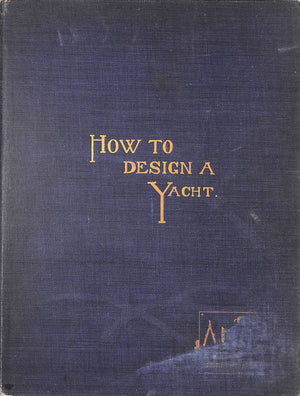"How To Design A Yacht" 1906 DAVIS, Charles G.
$950
DAVIS, Charles G.
[108] pp.
The Rudder Publishing Co
1906
11 3/4" x 9 1/2"
*binding splitting between pages 96-97*
Scroll Down for (12) Additional Scans:
Charles G. Davis was born in Poughkeepsie, N.Y. on July 22, 1870, and died in Manor Haven, Port Washington, N.Y. on January 22, 1959, aged 80. His father was clerk to Admiral David G. Farragut, Union Naval Commander during the Civil War. He began his love of boats and sailing at an early age; he is reputed to have sailed around Cape Horn in a square rigger at the age of thirteen. He and his older brother, William, built their own boat in 1884, cruising the Hudson and Western Long Island Sound in her before purchasing, refitting and racing an old sandbagger.
Among his other careers, Charles G. Davis was a well-known writer and illustrator for The Rudder, published from 1891 to 1977. In this book, How to Design a Yacht, published by The Rudder in 1906, Author Charles G. Davis talks about owning one sailboat, designing another, and delivering a third down the coast, and he takes a personal joy in each of the boats drawn. He loves each and every one, and shares them with us through his illustrations and hand-written text.
How to Design a Yacht is fully illustrated with Mr. Davis’s technically precise drawings and lively pen-and-ink sketches of the boats he loves. Nearly every page displays several ink drawings illustrating the text. He gives a friendly explanation of how to design a beautiful boat for yourself, how to balance a flowing sheerline and includes drawings of the relative heights of the bow and stern on different vessel types. He writes, "From the simple little plumb-ended cat-boat to the elaborate steam yacht there is a certain harmony of proportions and angles for each that can make a complete-looking, tidy little craft, or a great ugly-looking unfinished appearing one.”
Along with an extensive and useful description of how to actually draw your own set of lines plans, Davis explains how to create a table of offsets, and how to calculate your hull’s displacement and sail area. A good portion of the book is devoted to illustrating his instructional points, with line drawings, sketches, and commentary of 24 beautiful small boats.

























